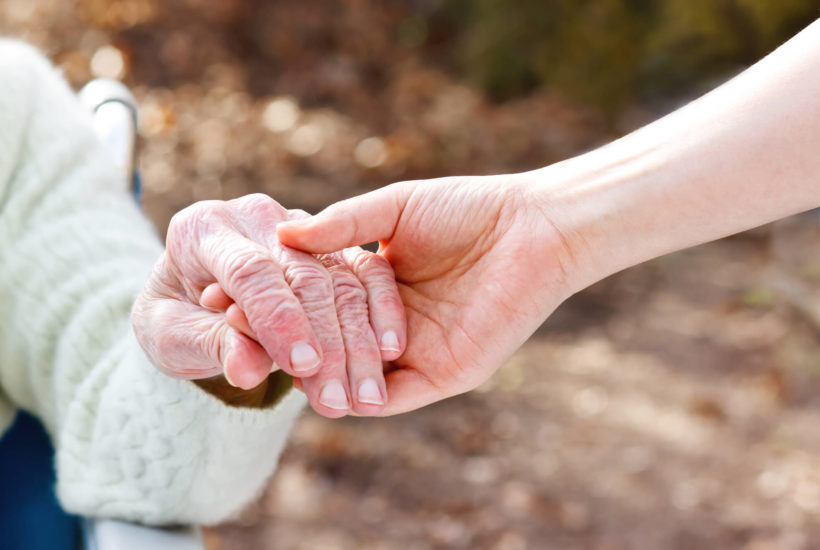Business
Coping with the early retirement you didn’t plan for
Many Americans are working towards their dream of early retirement. However, about 37% of citizens have to retire sooner than expected. The most common reasons cited for this are health issues, followed by employment problems (i.e. being laid off), and lastly familial difficulties. In addition to that, there will be an increase in older Americans with disabilities who will be needing caregivers.

There are countless articles on retiring early; I’ve even written some of them. It’s a goal many Americans dream of, work towards, and aggressively save for. However, according to the Center for Retirement Research, 37% of retirees had to stop working sooner than expected. A forced early retirement might sound like an oxymoron, like “too long of a vacation”, but for many, the reality is far from rosy.
The most common reasons cited for exiting the workforce prematurely are health issues, followed by employment problems (i.e. being laid off), and lastly familial difficulties. I would posit that the last concern may soon begin to weigh far more heavily on a worker in his or her peak earning years.
The state of family caregiving
Demographic changes may occur in slow-motion, but their momentum is inevitable. According to the Urban Institute, over the next 50 years, the number of older Americans with disabilities is expected to increase by 2.5 times. The bulk of this increase is expected to occur amongst the “oldest old”, those over the age of 80. Medicine is helping prolong the quantity of life, not always the quality. Simultaneously, the birth rate in developing nations is declining. This combination of more folks needing care and less available to offer it can have far-reaching effects.
Who are the caregivers?
In 2016, the National Alliance for Caregiving showed that roughly 1 in 6 Americans are taking care of a disabled family member, the average caregiver is 49 years old, and 60% of those caregivers are female. Relatives who step up to the responsibility often realize relocation, house reconfiguration, additional expenses, and of course work interruption.

How a caregiver can prepare
Caregiving can offer newfound stressors and rewards. For the grateful, it could feel like the ultimate repayment to Mom or Dad for all those years of child-rearing and support. However, some level of stress in this breaking of routine is unavoidable. The steps to prepare for this unwanted early retirement often involve the same retirement strategies you’ve heard, just doing more and earlier.
Liquidity in the 50s may become critical for financial support of the disabled as well as your own family. This is where savings inside of Non-Qualified accounts, Roth IRA’s (contributions available tax and penalty-free at any time), or Cash Value Life Insurance can avail funds sooner than originally planned.
Passive income generated from investment portfolios or rental properties can alleviate any lost income from the workplace. The argument for life insurance on a non-income producing homemaker (i.e. replacing a father’s lost income or hiring help in an attempt to fulfill the endless duties of Mom) can be reiterated in this “Phase 2” should a daughter have to care for her ailing mother.
How a care receiver can prepare
There are ultimately 3 solutions for those who require care, but never want to see themselves as a “burden” on loved ones. The first is to personally fund care from a third party (i.e. spending down assets, long-term care insurance, Medicaid, or other resources that can pay for assisted living and the like).
Some people concerned about the need for care, but the desire to stay at home and be surrounded by family, plan ahead for a stipend to be paid to the related caregiver, granted many sons and daughters may feel guilty accepting any sort of financial reimbursement. The last is an equalization in estate planning, the choice to leave behind greater assets to a child who retired early to take care of a parent. This can most efficiently be solved via permanent life insurance, an income-tax-free inheritance to replenish any lost wages/savings the caregiver missed out on.
So, will you or your loved ones need to prepare for the responsibility of caregiving? No one has a crystal ball, but demographics are showing this great responsibility to become more common by the day.
(Featured image by DepositPhotos)
—
DISCLAIMER: This article expresses my own ideas and opinions. Any information I have shared are from sources that I believe to be reliable and accurate. I did not receive any financial compensation for writing this post, nor do I own any shares in any company I’ve mentioned. I encourage any reader to do their own diligent research first before making any investment decisions.

-

 Africa2 days ago
Africa2 days agoMorocco’s Rising Country Risk Profile Boosts Investor Confidence
-

 Biotech2 weeks ago
Biotech2 weeks agoJohnson & Johnson’s Tecvayli Combo Shows Breakthrough Results in Multiple Myeloma
-

 Cannabis1 week ago
Cannabis1 week agoTrump Signals Historic Shift: U.S. Weighs Reclassifying Cannabis from Schedule I to III
-

 Crypto6 days ago
Crypto6 days agoHyperliquid Proposes Burning $1B in HYPE to Make Supply Deflationary

























